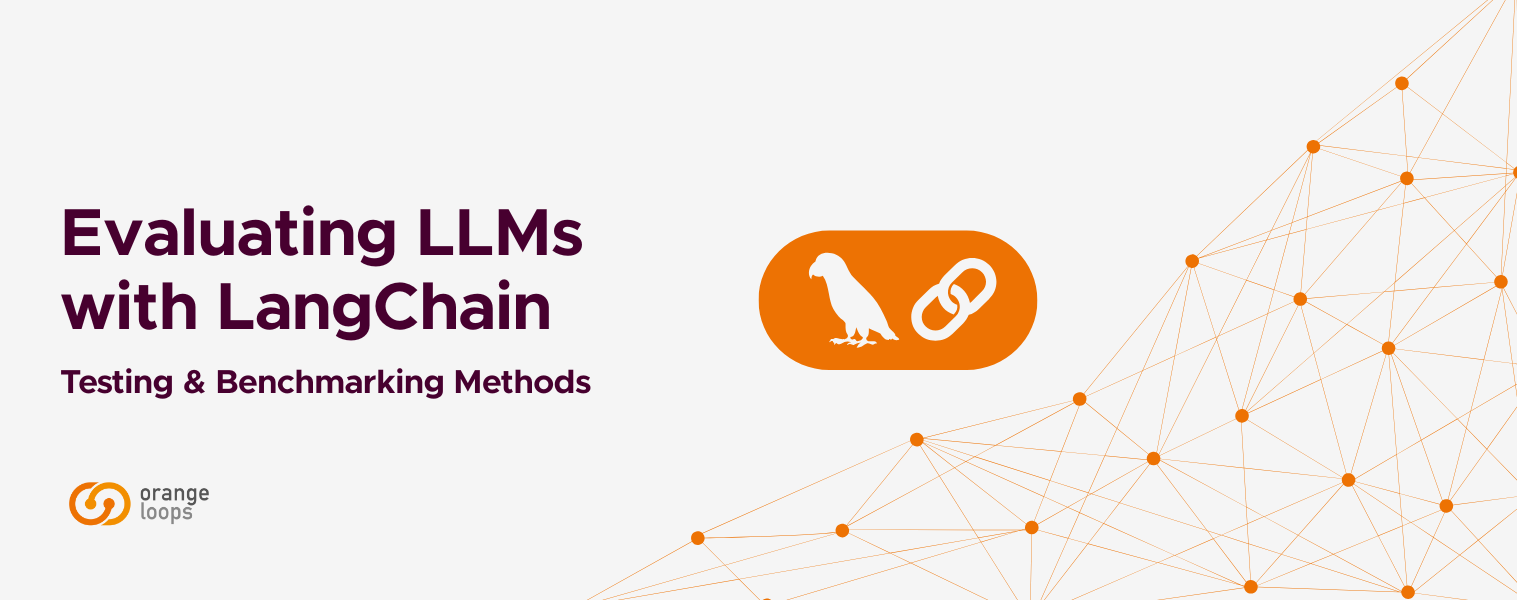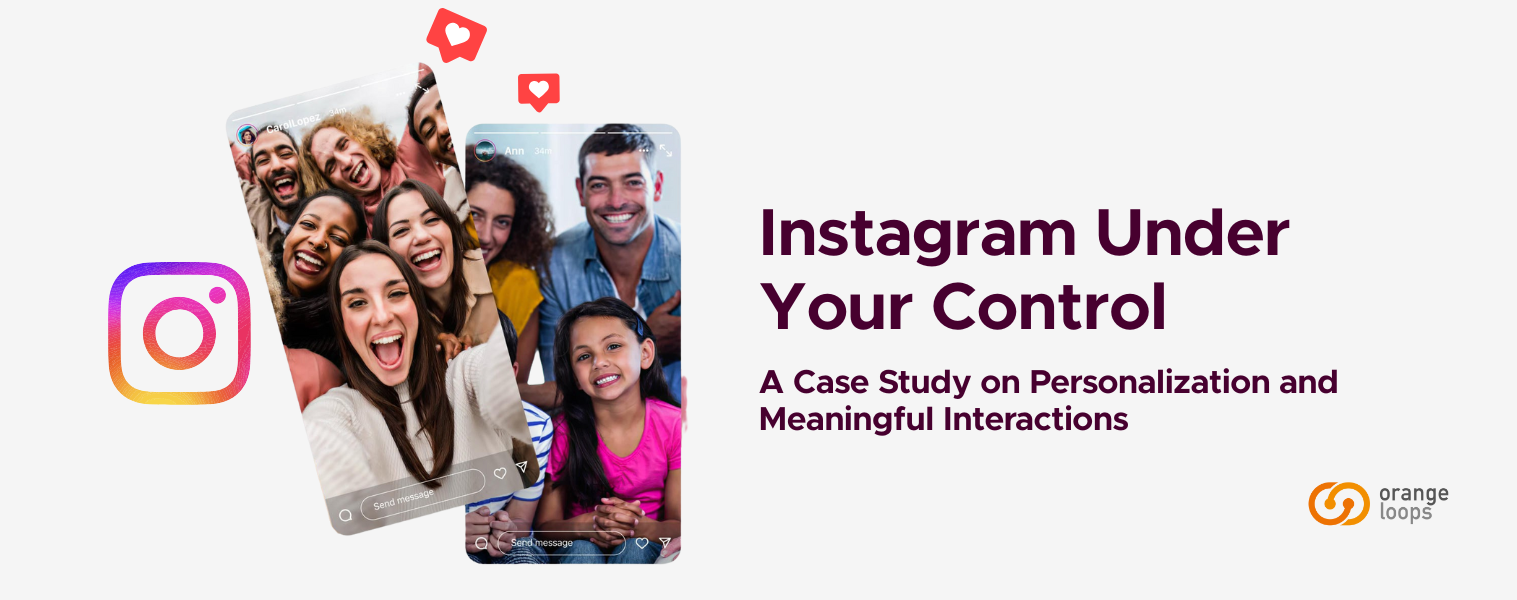
Large Language Models (LLMs) are powering a new wave of AI-driven products—from conversational agents to enterprise automation. But building with LLMs isn’t enough; companies must test, evaluate, and benchmark their models to ensure accuracy, relevance, and trustworthiness.
In this article, we explore three proven approaches for LLM evaluation with LangChain:
-
LLM-as-a-Judge (using models to score outputs),
-
Deterministic testing (ensuring consistent results under fixed inputs), and
-
Off-the-shelf evaluators (predefined benchmarks for faster validation).
We’ll break down how each method works, where it adds the most value, and lessons learned from OrangeLoops’ real-world implementations.
Why LLM Evaluation is Critical for AI Applications
Testing and evaluating LLM agents is crucial for multiple reasons, each addressing key aspects of performance and user experience:
- Accuracy:
Ensuring that an LLM’s responses match expected answers is essential, especially in high-stakes scenarios. By rigorously evaluating accuracy, organizations can prevent costly errors and enhance the reliability of the AI system.
- Completeness:
An LLM must provide all necessary details to fully address a user’s query. Evaluating completeness ensures that responses are comprehensive, making the AI more useful for professional applications such as legal research, technical support, or academic research.
- Relevance:
Confirming that responses directly address user queries is key to maintaining user trust and satisfaction. Testing for relevance helps in fine-tuning models to remain on-topic and context-aware.
- Clarity:
Clear and understandable responses are essential for effective communication. By evaluating clarity, developers can ensure that the AI delivers information in a user-friendly manner.
Now, let’s dive into the evaluation methods.
Method 1: LLM-as-a-Judge with LangChain
In the LLM-as-a-Judge approach, an LLM is configured to assess its own or another model’s responses. This method involves defining a structured schema—typically including elements such as a numerical score, a detailed explanation, and suggestions for improvement—and crafting a prompt that clearly outlines the evaluation criteria. For example, a concise evaluation instruction might be:
“Evaluate the answer for accuracy, completeness, relevance, and clarity, and return a score between 0 and 10.”
When to Use LLM-as-a-Judge
This approach is particularly useful in scenarios where:
- Comparative Evaluation: You want to compare the performance of different LLMs using a consistent evaluation standard. By keeping the judge model fixed and varying the model being evaluated, you can generate comparable test results that highlight the strengths and weaknesses of each candidate.
- Rapid Iteration: When developing or fine-tuning LLMs, using an automated evaluator allows for rapid feedback without needing extensive human involvement. This speeds up the iteration process and enables continuous improvement.
- Nuanced Assessment: The inherent language understanding of an LLM enables it to provide rich, context-aware feedback. This is especially valuable for assessing subjective criteria like clarity and relevance, where human judgment may be more nuanced and context-sensitive.
Advantages of LLM-as-a-Judge
- Consistency and Objectivity:
A fixed judge model applies the same evaluation criteria across all responses. This consistency helps reduce bias that might occur if multiple human evaluators with different perspectives were used. It ensures that every model’s output is judged against the same standards.
- Scalability:
Automated evaluations can process large datasets quickly. This makes the LLM-as-a-Judge method ideal for large-scale testing, where human evaluation would be prohibitively time-consuming or expensive.
- Rich Feedback:
Beyond a simple pass/fail outcome, the judge model provides detailed explanations and improvement suggestions. This feedback can help developers pinpoint specific areas where an LLM might be underperforming.
- Facilitating Model Comparisons:
By fixing the judge model and systematically varying the evaluated model, you can perform rigorous comparisons. This allows you to identify the best-performing model for a given task by looking at metrics such as average scores, consistency of high-quality responses, and the level of detail in feedback.
- Automation of Complex Evaluations:
LLMs can be tasked with evaluating complex responses that require understanding subtle nuances. This automation reduces the need for expert human evaluators to manually inspect every response, making the evaluation process more efficient and scalable.
- Adaptability:
The evaluation schema and prompts can be easily adjusted to focus on different aspects of the response, such as ethical considerations, logical consistency, or domain-specific accuracy. This flexibility makes LLM-as-a-Judge a versatile tool for various applications, from customer service chatbots to technical support agents.
Case Study: OrangeLoops’ OLivIA People Care Agent
Beyond the theoretical examples, we implemented an LLM-as-a-Judge evaluation pipeline in OLivIA, our People Care Agent. We built a batch of test questions in Excel and ran 10 complete evaluation rounds, always using the same model as the judge to ensure consistency.
Methodology
- Prepared ~49 questions per run, designed to cover different difficulty levels and response styles.
- Each answer was automatically evaluated on accuracy, relevance, completeness, and clarity, with a score ranging from 0 to 10.
- The results of each run were stored and later aggregated to analyze trends.
Results for 10 runs
- Average accuracy: 55.9%
- Average score (0–10): 7.23
- Average correct answers: 27.4 out of 49 questions
- Performance distribution (average per run):
- Excellent: 24.1 questions
- Good: 13.4 questions
- Fair: 3.3 questions
- Poor: 8.2 questions
The score distribution shows that most answers concentrated in the higher ranges (8–9), yet about 16–20% of cases still fell into Fair or Poor categories, highlighting room for improvement.
Key Takeaways
- Consistency: Using a fixed judge allowed us to compare runs and models under the same criteria, validating one of the main advantages of the method.
- Scalability: We automated evaluations that would have been impractical to review manually.
- Limitations: We noticed recurring errors (e.g., lack of detail), which suggests that while the judge detects patterns, it may also overvalue clear but incomplete answers.
Method 2: Deterministic Testing for Reliable AI Outputs
Deterministic tests are designed to verify specific functionalities within a controlled environment. This approach ensures that given a fixed input, the system consistently produces the expected output. Here are some examples and the advantages of this approach:
Examples
- Intent Classification:
In a conversational AI system, deterministic tests can validate that the model correctly identifies user intents. For example, if a user message such as “I need help with my order” is input, the system should consistently classify it as a “customer support” intent. The test would compare the output category against the expected result and flag any discrepancies.
- Greeting and Farewell Responses:
For chatbots designed to interact with users in a friendly manner, deterministic tests can verify that the system provides appropriate greetings and farewells. For instance, if the input is “Hello,” the system should respond with a greeting like “Hi there! How can I help you today?” Consistency in these responses can be ensured by comparing them to pre-defined, acceptable responses.
Advantages of Deterministic Testing
- Consistency and Reproducibility:
Since deterministic tests use fixed inputs and expected outputs, they ensure that the same conditions always yield the same results. This consistency is critical for identifying regressions or unexpected changes in behavior over time.
- Efficiency in Debugging:
By focusing on specific functionalities, deterministic tests make it easier to pinpoint where issues occur. If a particular test fails, developers can quickly identify and address the underlying problem without combing through ambiguous or contextually variable outputs.
- Integration with Continuous Integration (CI) Pipelines:
Deterministic tests are well-suited for automation in CI environments. Their clear pass/fail outcomes enable teams to rapidly deploy updates with confidence, knowing that critical components are continuously verified to behave as expected.
- Objective Validation:
Unlike subjective evaluations, deterministic tests provide objective criteria for success. This objectivity is particularly valuable in scenarios where precise behavior is required, such as in compliance-driven industries like finance or healthcare.
- Reduced Complexity:
By isolating specific functionalities, deterministic testing reduces the complexity involved in evaluating an entire system’s behavior. This modular approach simplifies both testing and subsequent troubleshooting.
Method 3: Off-the-Shelf Evaluators in LangChain
The criteria evaluator provided by LangChain offers an out-of-the-box solution to assess responses against pre-defined benchmarks. For instance, you might define a simple custom criterion such as:
“Does the response mention relevant company information?”
This is just an example, developers can define any criteria that best fit their application needs. You can set up multiple criteria, and in such cases, the evaluator checks that each one is met in the response. The evaluator aggregates this feedback, providing clear metrics and insights on how well the responses meet the defined standards.
Since off-the-shelf evaluators are provided by LangChain they can be integrated with LangSmith. By doing so, you can leverage its user-friendly UI to visualize results, track trends, and drill down into detailed evaluation metrics. This integration streamlines the process of monitoring and iterating on model performance, making it easier to identify areas for improvement and to ensure that your AI system consistently meets quality benchmarks.
Advantages of the Off-the-Shelf Criteria Evaluator
- Customization and Flexibility:
Developers have full control over the criteria used for evaluation. Whether it’s verifying the inclusion of key topics, ensuring the presence of specific details, or even checking for stylistic elements, you can define as many custom benchmarks as necessary. This flexibility allows you to tailor the evaluation process precisely to your application’s requirements.
- Aggregated Feedback:
Instead of receiving isolated evaluations for each response, the evaluator aggregates the feedback, providing a holistic view of model performance. This aggregated data helps in identifying systemic issues and trends over time, enabling proactive improvements.
- Standardization of Evaluations:
Using a criteria evaluator ensures that all responses are evaluated against the same set of benchmarks, creating a standardized framework for assessment. This standardization is crucial for fair comparison between different model versions or configurations, ultimately helping to select the best-performing model for your needs.
Comparing LLM Evaluation Approaches
Each evaluation approach offers unique strengths and trade-offs that make it well-suited for different testing scenarios:
LLM-as-a-Judge:
Advantages:
- Nuanced Feedback: Leverages the model’s language understanding to provide detailed, context-aware evaluations.
- Comparative Consistency: When using a fixed judge, you can compare multiple LLMs under the same criteria.
- Rapid Iteration: Ideal for continuous improvement without heavy reliance on human evaluators.
Disadvantages:
- Subjectivity Risk: Although automated, the quality of feedback depends on the judge model’s own performance.
- Complexity in Calibration: Fine-tuning prompts and schemas can require additional effort to ensure evaluations are both consistent and objective.|
Deterministic Testing:
Advantages:
- Consistency and Reproducibility: Fixed inputs and expected outputs yield clear pass/fail outcomes, which are essential for pinpointing regressions.
- Efficiency in Debugging: Isolated tests help developers quickly identify and resolve issues within specific functionalities.
- Seamless CI Integration: Well-suited for automated testing pipelines, ensuring continuous validation of critical components.
Disadvantages:
- Limited Scope: Focused on specific functionalities, deterministic tests may not capture the broader context or nuanced quality of full responses.
- Rigidity: They might fail to account for acceptable variations in natural language responses, leading to potential overfitting on strict criteria.
Off-the-Shelf Criteria Evaluator:
Advantages:
- Customization and Flexibility: Developers can define and combine multiple criteria tailored to their application’s needs.
- Batch Processing and Aggregated Feedback: Efficient handling of large datasets with comprehensive metrics and trend analysis.
- Visual Integration with LangSmith: Provides a user-friendly UI for visualizing evaluation trends and making data-driven improvements.
- Standardized Assessments: Ensures fair comparisons across different model versions with uniform benchmarks.
Disadvantages:
- Pre-defined Benchmarks: While flexible, the evaluator is limited by the scope of the criteria defined overly narrow benchmarks might miss broader quality issues.
Key Takeaways for AI Product Teams
Overall, the choice of evaluation method depends on your specific goals and context.
- For holistic, qualitative insights, the LLM-as-a-Judge approach shines by offering detailed, adaptive feedback.
- For pinpointing issues and ensuring core functionalities perform reliably, deterministic tests provide an objective and reproducible framework.
- Meanwhile, the off-the-shelf criteria evaluator combines flexibility with scalability, making it ideal for large-scale evaluations and continuous monitoring.
By leveraging these approaches in tandem, you can build a comprehensive evaluation framework that not only ensures your AI systems are accurate, complete, relevant, and clear, but also fosters continuous improvement and reliability across all aspects of LLM performance.
At OrangeLoops, we don’t just build AI prototypes. We deliver AI-powered digital products that work in production. From testing LLM agents with LangChain to integrating AI into enterprise workflows, our team helps startups, scale-ups, and enterprises validate, build, and scale AI responsibly.
If you’re exploring AI adoption, need to evaluate LLM performance, or want a strategic partner to guide your next digital product, let’s talk!

